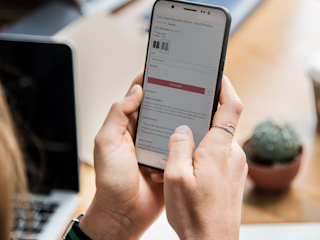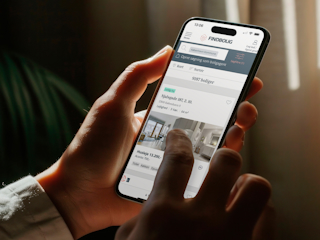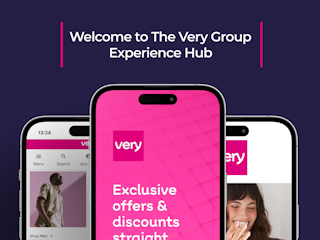14. Mai 2021
When new high-reward business opportunities are identified, and an internal fear of missing out may be on the horizon, we have seen first-hand the transformative power of working iteratively, inter-disciplinary and, finally, wisely.
Let me provide you with some advice on five things to consider as you deliver on this unique business opportunity of yours – especially with the parameters of time to market, delivering business value and making an impact to the customer all being of equal weight.
If you’re interested in getting from project initiation to first transaction in as little as 10 weeks, then here are five pieces of advice to help you realize that goal.
1: Start by setting clear measurable goals and get your differentiation strategies right.
Whenever you are talking about new a business opportunity, our experience tells us that this involves either new audiences, new markets, or new go-to-market models. Whenever something is new, make sure you clearly define the sentiment and drive behind it – both from a business differentiation / proposition and a customer acquisition standpoint.
In our experience, we’ve seen business sentiment spanning all the way from better customer data, leading to an opportunity for deeper customer relationships and more brand equity, to higher margins, through efficient end-to-end supply chain. For the customer, we see convenience and simplicity coming up as the key drivers – whether that’s being able to do business in a local currency or through improved findability via a more localized merchandising approach.
Think of it this way; not every digital experience acknowledges how a spring collection is relevant at different times over the course of the year, dependent on the market you’re approaching.
Whenever you seek to make a dent and hit the market quickly, you must agree on the key sentiments to keep front and center.
2: Align, agree, and then act appropriately.
In our experience, whenever there are mature ways of working, strong logistics and operations, and an aligned organizational ideology, there is a great opportunity to be agile. Whenever organizations confidently check those boxes, then the organization typically dares to operate at speed.
As you evaluate and initiate a digital project benefitting from time to market, you must ask yourself three key questions to self-reflect on the likelihood of succeeding:
- Are we aligned on the key objective behind this, and the definition of success we’re being held accountable to?
- Do we agree on the present opportunity in the market, and how we seek to take full advantage of it?
- Can we act when we need to? It requires the right availability, the right people, and the right executive support.
If you look at it as a simple 1-2-3, you will see that we ultimately talk about validating the viability, desirability, and feasibility of the journey you’re about to embark on. If no is the answer to just one the three questions, you need to ensure you have the right mitigation card in your back pocket.
3: Partner up to benefit from proven expertise.
It is easier said than done, but please choose your partner wisely whenever you are looking to do something both fast and right. Because we have been there before, we know exactly what sources and best practices to tap into to gain the maximum amount of traction possible. If your current partner has no strong opinion on the best composable platform to use, the best architecture to establish or the best user experience design principles to apply, you may be looking the wrong way.
We are big believers in our vast experience in retail + ecommerce being a strong differentiator of ours – not only does it mean we understand high-performing ecommerce, but we also understand how get there fast. Our past work has helped shape and define the best practices, the key principles, and the strict guidelines the broader industry relies on today.
4: Take small yet impactful steps
Without going too deep on the subject of Composable thinking, I do want to highlight one of the most important advantages made possible by this mindset;
directly driven by your goals, you can enable a digital experience in small, tangible and highly impactful increments.
Whenever we hear about a digital initiative being rooted in a net-new business opportunity, we often suggest getting to market fast - yet right - to ensure we test our business case and learn from in-market feedback. If you go down the path of piloting an end-to-end commerce experience, one rooted in simplicity and foundational commerce principles, you enable data-led decision-making very quickly. Equally importantly, you also enable revenue to pass through your new channel immediately, accelerating your path to ROI.
Let's quickly go back 2 minutes. At the start we asked ourselves a vital question, ultimately being a contributor to success; “Can we act when we need to?”. With any transformative initiative, you must consider the inward impact to tool, process or mindset. We are talking about the ‘total experience’ strategy.
5: Think about the experience in totality.
Any leader behind transformative change must apply a total experience strategy to create impactful and sustainable digital experiences. Whenever we consider the impact we can make to the customer, we also must ask ourselves what said change requires from the organization. Whenever you enable incremental thinking, you ultimately unlock the ability to foster internal buy-in and change, which is a must-have for any business transformation to be successful.
We regularly work with clients who are just starting out on this type of journey. Maybe we can help you too in your transformation. These five steps will help you to make the first move, but for more guidance on the best directions to take:
The Valtech Commerce team works alongside some of the world’s best-known brands to deliver best-in-class commerce solutions to transform businesses for the long term. Whatever you need to achieve, our teams are here to help you succeed.












